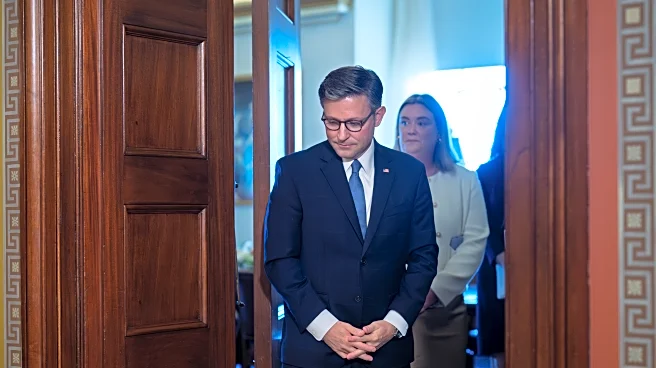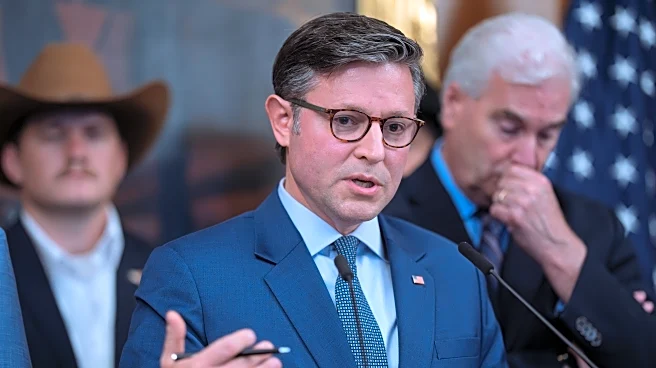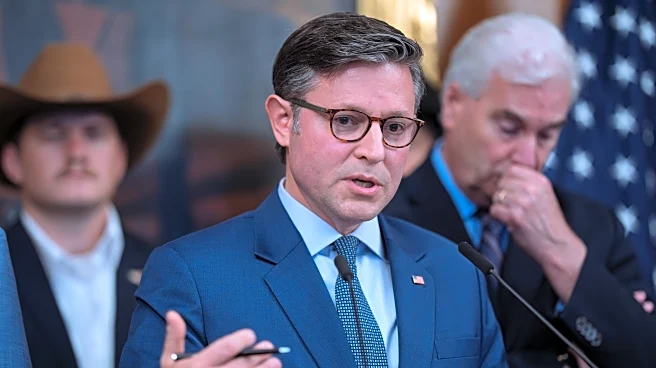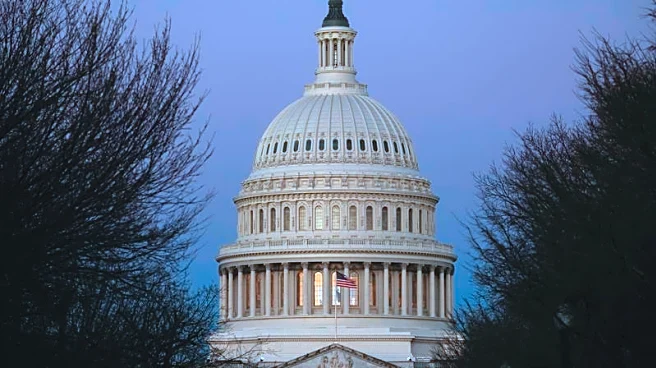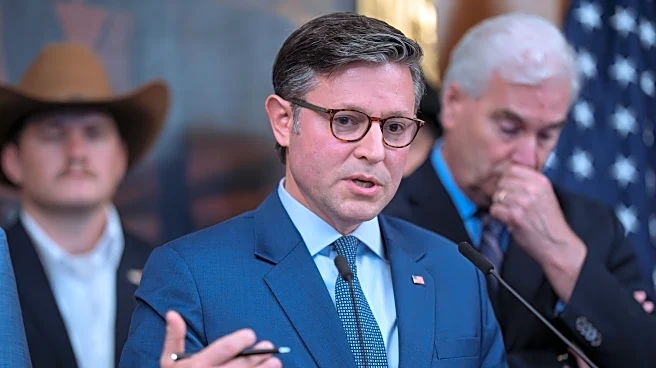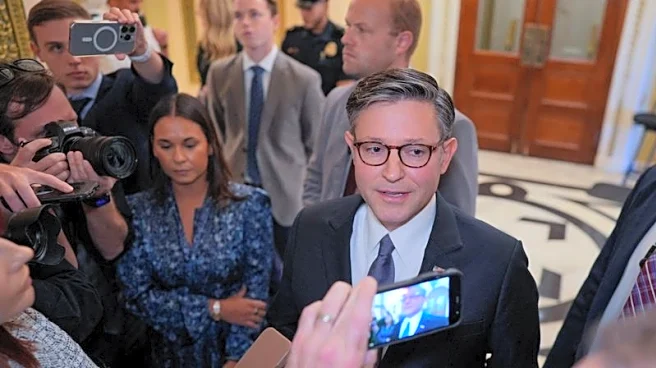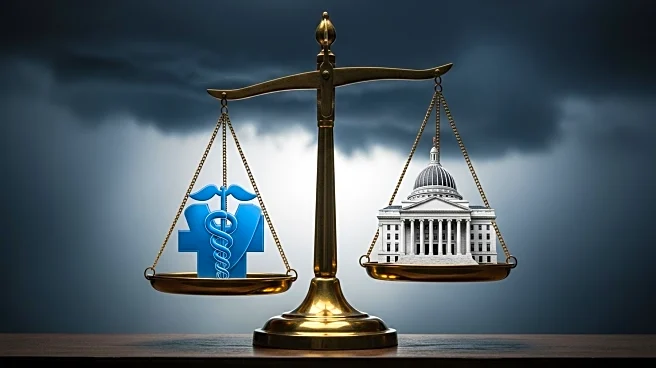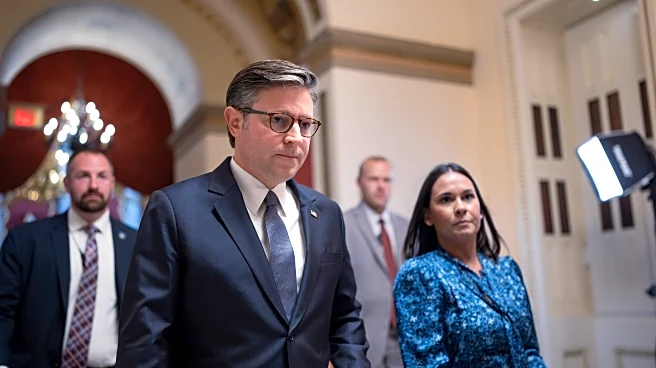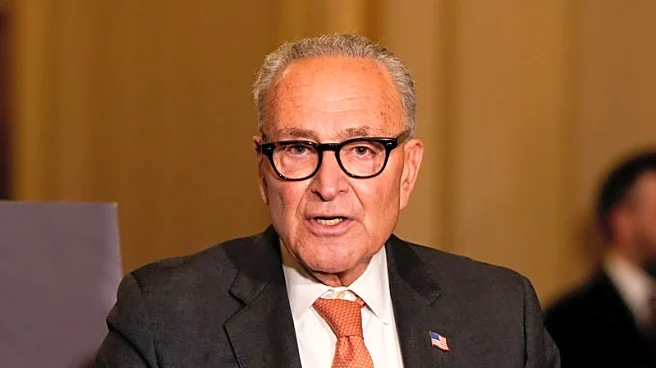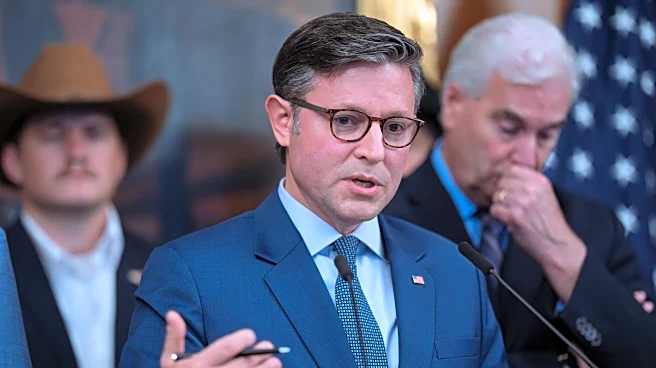What's Happening?
The House GOP has passed a stopgap funding bill to keep the government running through November 21, amid efforts to avert a potential shutdown. The bill passed with a narrow 217-212 vote, highlighting Speaker Mike Johnson's ability to maintain Republican support. The measure now puts pressure on Senate Democrats to decide whether to support the bill or risk a spending stalemate. The bill includes $30 million for congressional security and $58 million for executive and judicial branch security, along with a funding fix for Washington, D.C. Senate Democrats have agreed to vote on competing funding bills, including a Democratic counterproposal with health care changes. Both bills are expected to fail, increasing the likelihood of a funding lapse.
Why It's Important?
The passage of the stopgap funding bill by the House GOP is crucial as it aims to prevent a government shutdown, which could have significant economic and political consequences. The bill's advancement increases pressure on Senate Democrats, who must choose between supporting the GOP measure or facing a prolonged shutdown. The inclusion of security funding and a fix for D.C. highlights the GOP's focus on maintaining government operations while addressing specific needs. The Democratic counterproposal, which includes health care changes, reflects ongoing political tensions and the use of leverage in negotiations. The outcome of this legislative battle will impact government operations and public services, affecting various stakeholders.
What's Next?
The Senate is expected to vote on the competing funding bills, with both likely to fail. Senate Majority Leader John Thune plans to bring the GOP plan back for another vote close to the September 30 deadline, forcing Democrats to choose between accepting the GOP plan or risking a shutdown. The potential recess for both chambers adds uncertainty to the situation, as lawmakers may leave Washington without a clear path forward. The ongoing negotiations and political maneuvering will continue to shape the legislative landscape, with potential implications for future funding bills and government operations.

